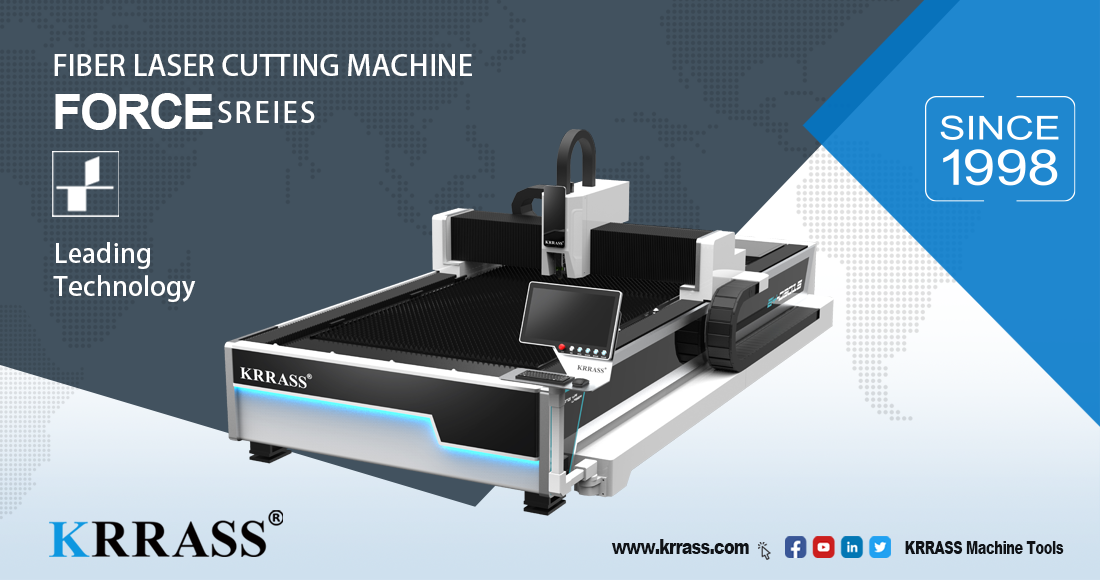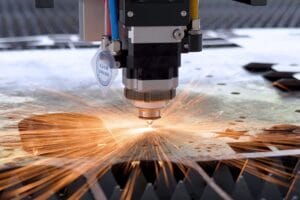Surface microstructural change of materials cannot occur unless they undergo cutting processes. One of the major techniques for cutting materials for machining is laser cutting. It helps to create patterns according to designs and required outcomes. This process involves melting, burning, and vaporizing materials in the presence of a powerful laser beam. While this process is very effective, it is essential to understand the various laser cutting advantages and disadvantages.
The cutting process is successful with the help of a laser cutter which uses a thin laser beam by focusing on the material. However, before you can start cutting, there must have been a specified target you have in mind based on your designs or patterns. Manufacturers find it hard to cut through some hard materials. However, with the introduction of a laser cutter, it is now easy.
Here, we will guide you through what you need to know about laser cutting. It also covers how it works and the advantages and disadvantages of laser cutting.
What is Laser Cutting and How Does it Work?
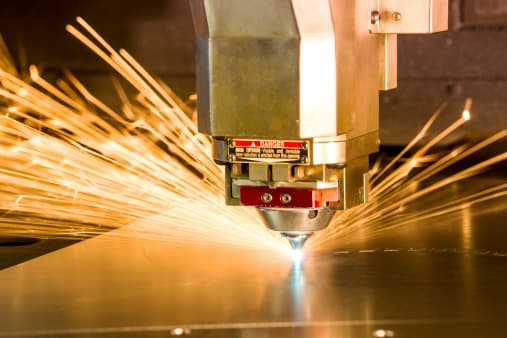
Many manufacturing industries use computer numerical control machines nowadays to speed up their production processes. These machines use several processes, and one of them is laser cutting. Basically, all computer numerical control machines involve giving commands to machines after transforming the digitalized drawing into a computer language.
This language gives the device the instruction needed for executing the designs. The relationship between the language and the machine is like when you send a picture to a printer. Also, this is the same way laser cutting machines work, and they can execute the designs in a short time.
The laser cutting product design allows it to use 2D vector files for guiding lasers. It is made up of a laser resonator. This resonator has glass fibers or sometimes may contain a gas mixture of crystal bodies. The constituent resonator depends on the designer’s method to cut the materials. The application of the energy to the mix will begin the process of cutting. Then, the laser is focused after sending the mixture through different mirror lenses.
How Does Laser Cutting Work?
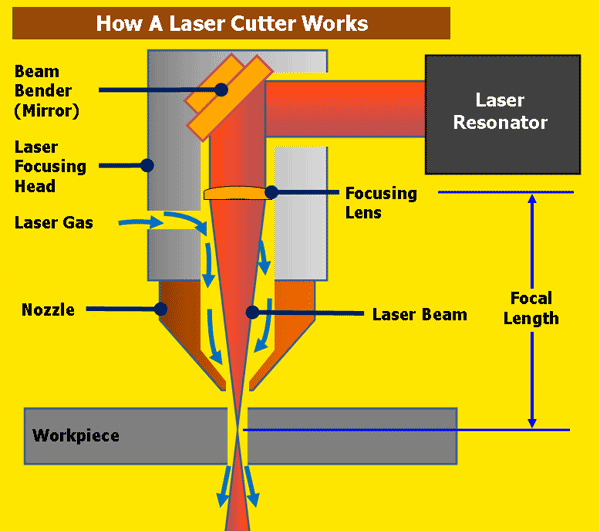
Before diving into laser cutting advantages and disadvantages, it is essential to understand how it works. The way how laser cutting machines work is similar to CNC machines work, but it uses a high-power laser. The laser will guide the material or beam by directing itself through CNC and optics. The device will use the CNC, or G-code provided, to cut into the material and control the motion.
Melting, vaporizing, and burning the material will occur after focusing the laser beam. Also, you can acquire a finished edge surface of high quality when you blow the material with a jet of gas. The creation of a laser beam occurs in a closed container by stimulating lasing materials through lamps or electrical discharge.
The amplification of the lasing materials then takes place after reflecting internally through a partial mirror. The phenomenon continues until enough energy is built up in the form of a stream of coherent monochromatic light to allow for its escape. The intensity of the light increases after using fiber optics or mirrors to focus on the work area.
The diameter of a laser beam is below 0.32 mm at its thinnest edge. In contrast, there is a possibility of the kerf width to be as little as 0.10 mm. This, however, depends on the thickness of the material. If the cutting of the material with the laser cutting machine will not begin from the material’s edge, then use the piercing process.
The piercing process allows the laser to make a hole in the material using high power. For instance, burning through a 13 mm stainless steel sheet will take 5 to 15 seconds.
Advantages of Laser Cutting
The advantages of laser cutting technology are enormous. Some of these advantages are discussed below:
Benefit One: High Precision and Accuracy
The precision at which the laser cuts into materials is high, and it is by delivering a focused beam of light. The laser is powerful and small, but the accuracy with which it melts and evaporates materials is unparalleled. Most times, the tolerance range of the laser is from 0.003 mm to 0.006 mm.
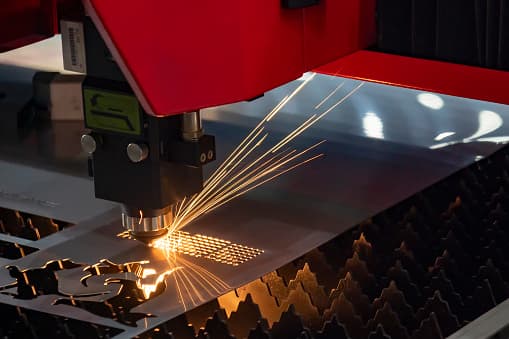
The tolerance level of a plasma cutter is around 0.02 mm, which is higher than that of laser cutting. Likewise, other cutting tools have tolerance levels between 1 to 3 mm and above. Suppose there is a need for a machine with high precision and accuracy during manufacturing processes. In that case, the go-to tool is usually laser cutters. Thus, the aerospace industry that requires a tight tolerance level uses laser cutting.
Benefit Two: Low Cost and More Affordable
The economic edge laser cutting has over other CNC machines of the same caliber is one of the advantages of laser technology. There is no need to build a custom tool with the laser cutting technology. You do not also need to modify the device for any project since no extra cutting tools are needed.
Also, there is no wearing out of the surface since there is no physical contact. The cost of maintenance is less than other machining technologies since the laser cutter’s mechanical parts are not much. The cost of operating the machine is also lesser compared to traditional tools for manufacturing.
Benefit Three: Used for Jobs of Vast Complexity
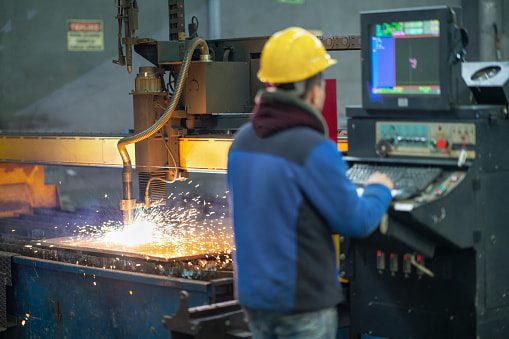
Many jobs that may be too complex for other cutting technologies are simple for laser cutters. The laser technology can work on the thinnest edge of a material. While the cut area may experience a slight distortion or warping, you can quickly produce complex geometries using a laser cutter. The tolerance level of laser cutting is broad, and it can accommodate a large number of materials.
Benefit Four: Higher Sheet Utilization with Less Waste
When you use a laser cutter with materials, just a tiny amount of the materials will go to waste. This makes laser cutting stand out from other machines with a considerable portion of the material. With a laser cutter, manufacturers can make maximum use of materials. The cost of production also decreases due to the higher utilization of the resources and less waste material.
Benefit Five: Damage Prevention
Another advantage of laser cutting is avoiding damages, even to the narrowest materials. Many people tend to believe the misinformation about the device that warping or damaging the materials is unavoidable. The popular belief has the premise of using high heat in the laser cutting process. You should note that heat affects only a small area of the material and does not affect the tolerance. The speed at which the laser cuts through sheets is breakneck, so cutting takes lesser time. Therefore, manufacturers can easily avoid warping and distortion.
Benefit Six: Low Power Consumption
In reality, you need much power to effect cutting with power. However, the laser cutter not having any other movable parts reduces the energy consumed. In contrast, machines with movable parts tend to consume more energy. Also, the time it takes for the laser cutter to cut through a material is very fast. This helps save time and power. When there is a decrease in the energy consumed, the cost of operation also reduces.
Benefit Seven: Compatibility With a Wide Range Materials
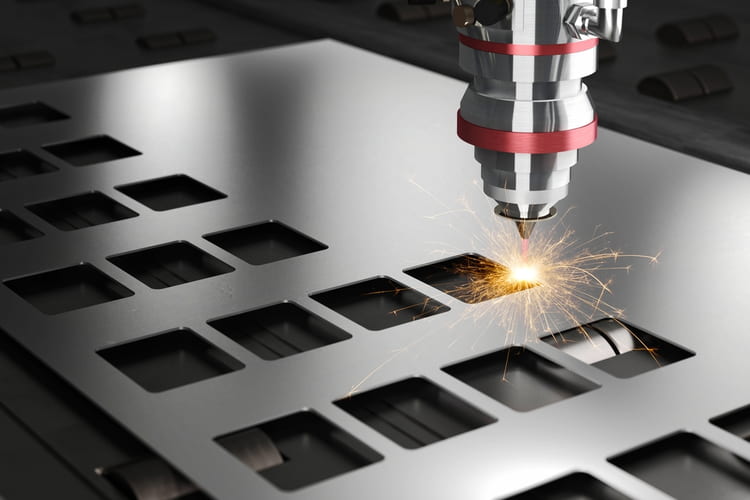
The ability of the machine to work on an extensive array of materials is interesting. Besides cutting materials, laser cutting helps with other processes like marking, drilling, and engraving. It is worthy of note that you do not need to switch or replace tools to do all these different works.
Laser cutting does not limit itself to cutting metals alone. Other laser cutting materials include wood, aluminum, plastic, copper, and brass. Laser cutting is a versatile process since it can easily cut through almost all different kinds of materials. A bonus tip: Krrass always takes advantages of the best material to manufacture high precision sheet metal fabricated products.
Disadvantages of Laser Cutting
Despite the many benefits of laser cutting, it also has a few downsides you should know. We will discuss some of them below.
Drawback One: Evaporation of Some Materials
When you cut some materials such as plastics, evaporation tends to occur. This is a significant downside to laser cutting. Although this disadvantage is manageable, professional machine operators can easily maneuver the disadvantage. The professionals change some of the arrangements of the device to prevent this problem. However, the cost of actualizing these changes is very high these days.
Drawback Two: Requires Technical Experts
A professional operator is required to use all the machine’s features and identify a problem quickly. If the device is not set up correctly, it will affect the materials and cause more significant damage to the laser cutting. Hiring an operating specialist is essential, and this comes with a lot of money since there is a limit to qualified professionals available.
Drawback Three: Limitations to Metal Thickness
Although laser cutting is compatible with almost every material, including sheets, it is preferable to use another system to cut thick metals. You can determine the thickest sheets from the available machine, which also requires the presence of a specialist operator. The most comprehensive range most manufacturing companies use is 15 to 20 mm on average.
Drawback Four: Upfront Costs
If you want to procure a laser cutting machine, you may have to spend a large sum of money. For example, when you compare plasma cutting vs laser cutting, the latter costs almost two times plasma cutting. The money needed for getting the machine is very high, although you will later make more than that in the long run.
Drawback Five: Production of Harmful Fumes and Gases
We mentioned earlier that laser cutting is compatible with various materials. The compatibility of laser cutting with almost all materials has a downside to it. Each material that will melt during the thermal cutting leads to gases and harmful fumes. The production of these toxic gases is usually typical when the material you are working with is plastics.
Conclusion
The introduction of laser cutting provides immeasurable benefits for the manufacturing industries. The machine helps cut many materials within a period, thereby saving time and reducing the cost of operation. It also has widespread usage in industries such as aerospace and automotive industries. Understanding the laser cutting advantages and disadvantages will help you make the best choice for your project. Moreover, you can always contact Krrass for help with your laser cutting services.
FAQs
What Can Laser Cutting Do?
Laser cutting helps produce some fantastic products, and it is used in many industries such as the automotive and aerospace industries. It helps achieve results according to the designs made before operating the machine. The laser cutter can cut through almost all materials, including metals, chrome, aluminum, and plastics.
Is Laser Cutting Expensive?
The cost of the machine depends on the kind of material you want to use it to cut because different materials require different watt lasers. For example, the type of watt laser required for cutting rugged woods, metals, and dense materials is higher than those needed to cut thinner materials. Generally, laser cutting is costly. However, if you look at the bigger picture, it is worth it.
Why is Laser Cutting Perfect for Mass Production?
One of the advantages of using laser cutting is the high precision and accuracy of the machine in producing and replicating results. As a manufacturing industry, when making a product, you will want to ensure it is of the highest quality. This is what laser cutting offers, producing the same product with precision and accuracy in high volume. Other advantages such as the time saving and reducing the cost of production are other things that make laser cutting perfect for mass production.
What Are the Advantages and Disadvantages of Laser Beam Machining?
Laser beam machining has many advantages, and there are some minor disadvantages. Some of the benefits include that it can cut through all materials and does not require tooling costs. Also, it does not experience wearing out of the surfaces and works with high accuracy and precision. The major disadvantage of laser beam machining is that it requires a massive amount of money to maintain. It can also produce harmful gases when melting plastics.
Learn more about our products, please visit and subscribe to our Youtube channel
